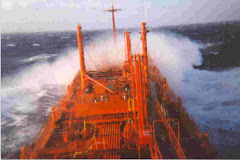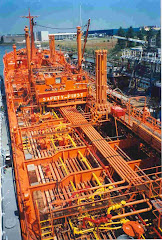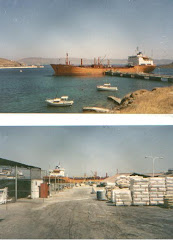Optimism on China and other emerging markets is a major driver in shipping markets this year in all classes of tonnage as well as resumption of new building orders. WTO's Pascal Lamy revealed global trade is now expected to grow 13.5% this year. The future depends on successful trade rebalancing, a highly complex and political issue. China watchers like Michael Pettis and Andy Xie do not believe in the sustainability of the growth model.
Pettis and Xie feel that this system is resulting in increasing asset misallocation. The growth model is based on easy money from domestic financial repression that the government invests in infrastructure projects, SOE's and real estate. China keeps its currency pegged with the US Dollar at advantageous rates to promote exports by massive purchasing of US dollar assets rather than importing their trade surpluses domestically. Internal saving rates are held at very low levels.
Xie has argued that there is no rational pricing mechanism for real estate swapped by local government entities. Pettis is worried about future non-performing loans. He cannot see how the Chinese authorities can boost consumer growth from loss-making infrastructure projects:
"But governments do not cover losses. They channel money from households to cover losses. In other words if the Chinese railroad system turns out to be economically non-viable (i.e. the true economic cost of building it exceeds the economic benefits), households will be forced pay for the net reduction in national wealth. This of course reduces future household income and consumption – the surging of which is supposed to make all these infrastructure projects viable."
Xi Li, a Consultant at State Street Global Advisors, focused in a recent article on the real exchange rate (RER), which is nominal exchange rate (NER) adjusted for inflation rate and is more important in determining a country’s current account balance with another country. China's NER, largely fixed with the U.S. in the last few years, is provoking very high internal inflation. Bubbly housing prices are due to a combination of negative real interest rates, few investment options, and extremely low carry costs in terms of maintenance fees and zero property taxes.
This viewpoint dovetails with Andy Xie's observation that the global economy is like fried ice cream, where China and other emerging markets are swallowing the US stimulus. Fed easy money policies are putting them on fire with inflation. Li feels that these dynamics will eventually put China in a very precarious position. China will become even more dependent on investments and a current account surplus to grow its economy. It is increasingly cornering itself by reducing the RER of Yuan.
Given the fixation of the current debate on adjusting the NER between Yuan and USD, one day, the continuously exploding trade deficit, coupled with the likely persistent high unemployment rate in the U.S., means that the only outcome will be the threat of trade war, or trade war itself. The U.S., controlling final demand, may finally realize that this control gives it much stronger bargaining power, may end up as the relative winner. If China has trouble, the most commodity driven economies. None of this would be good for commodity shipping.
Pettis recently wrote a lengthy piece on the politics of Chinese adjustment. He notes four ways of boosting the household income share of national income and made a list of winners and losers as follows:
Winners and losers
1.) Raise the renminbi:
Winners:
Households as consumers, especially middle and lower middle classes
Service industries
Exporters
PBoC
Losers:
Exporters
PBoC
2.) Raise interest rates
Winners:
Households as savers, especially the middle and upper-middle classes
Service industries
Labor-intensive industries
Small and medium enterprises
Capital intensive industries
Real estate developers
Banks
Local governments
Speculators
PBoC
Losers:
Capital intensive industries
Real estate developers
Banks
Local governments
Speculators
PBoC
3.) Raise wages:
Winners:
Households as workers, especially lower middle classes and urban workers
Consumer and retail businesses
Capital intensive industries with domestic customers
Employers, especially low-income labor intensive companies
Losers:
Employers, especially low-income labor intensive companies
3.)Transfer state assets:
Winners:
Households, with the distribution depending on the form of privatization
Government, especially local officials
Losers:
Government, especially local officials
He notes that the trick for any of the first three adjustment measures (which are the necessary ones for a sustainable adjustment) is to adjust just fast enough so that the employment created by the rise in household consumption offsets the unemployment created by financial distress among the relevant losers. He stresses that Chinese adjustment must be slow because in the short term the negative consequences for employment can overwhelm the positive consequences.
Pettis feels that the pace of China’s adjustment will in large part depend on the pace of the external adjustment. Its trade surplus depends on the ability and willingness mainly of the US and trade-deficit Europe to absorb them. He does not think that the rest of the world is able (especially in the case of trade-deficit Europe) or willing to wait long enough to allow China a relatively easy adjustment.
Accordingly, Pettis interprets the China optimism of commentators like the Sydney Morning Herald's Michael Pascoe and the Financial Times's David Stevenson as the final stages of a bubble. Both Pascoe and Stevenson see a huge rising consumer market in China in the coming years as a major driver in world growth.
The shipping community seems to believe strongly in the robust growth school with Peter G's block vessel acquisition deals earlier this year, Navios's foray into tankers and Evergreen's new order of post-Panamax tonnage. From 10% of the world container vessel fleet in layup in 2009, pundits are now concerned about a future shortage of boxships in view of this massive new growth ahead. All this is all based on continued robust demand growth in China and other emerging markets.








